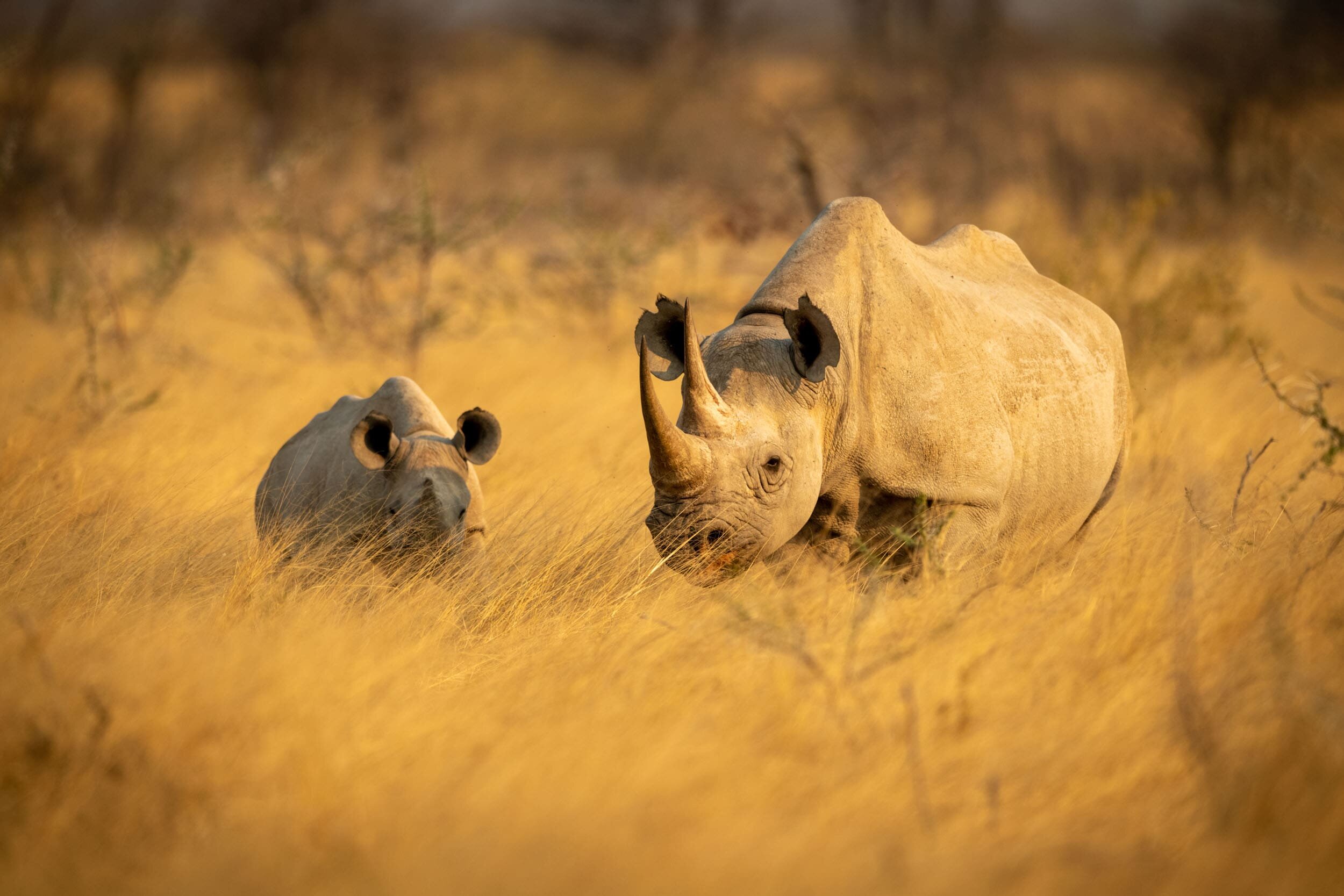Rhino Facts
“They seek him here, they seek him there. That damned elusive rhino.”
Rampaging rhino
The rhino is a very annoying animal: it’s so rare that you’re very unlikely to see it, and that means you almost always end up disappointed!
Hence very annoying.
The only times I’ve managed to get close were at a safari park in Spain and at Etosha National Park, where I was lucky enough to see 17 in two days!
As a result, I don’t have any decent pictures of rhinos, so I apologise in advance.
All I can do is tell you all the basic facts and throw in a few record shots.
Basic facts
Order: Perissodactyla
Family: Rhinocerotidae
Species and scientific names: white rhinoceros (Ceratotherium simum), black rhinoceros (Diceros bicornis), Indian rhinoceros or greater one-horned rhinoceros, (Rhinoceros unicornis), Javan rhinoceros or Sunda rhinoceros or lesser one-horned rhinoceros (Rhinoceros sondaicus), Sumatran rhinoceros (Dicerorhinus sumatrensis)
Subspecies: southern white rhinoceros (Ceratotherium simum simum), northern white rhinoceros (Ceratotherium simum cottoni); Chobe black rhinoceros (Diceros bicornis chobiensis), Uganda black rhinoceros (Diceros bicornis ladoensis), south-central rhinoceros (Diceros bicornis minor), south-western rhinoceros (Diceros bicornis occidentalis), East African rhinoceros (Diceros bicornis michaeli); Sumatran rhinoceros (Dicerorhinus sumatrensis sumatrensis), Bornean rhinoceros (Dicerorhinus sumatrensis harrissoni), Northern Sumatran rhinoceros (Dicerorhinus sumatrensis lasiotis); Indonesian Javan rhinoceros (Rhinoceros sondaicus sondaicus), Indian Javan rhinoceros or lesser Indian rhinoceros (Rhinoceros sondaicus inermis), Vietnamese Javan rhinoceros or Vietnamese rhinoceros (Rhinoceros sondaicus annamiticus)
Mass: 1 t
Height at shoulder: 1.5–2 m (4 ft 11 in–6 ft 7 in)
Length of head and body: 2.4–4.6 m (7 ft 10 in–15 ft)
Appearance: Large quadruped mammal with grey, wrinkled skin and either one or two horns.
Top speed: 35 mph (55 km/h)
Gestation period: 15-18 months
Lifespan: 35-50 years
IUCN Red List Status: Critically Endangered (black and Sumatran rhino), Vulnerable (Indian/greater one-horned rhino), Near Threatened (white rhino)
Population: 27,000, decreasing (white rhino, Sumatran rhino), increasing (black rhino, Indian/greater one-horned rhino), stable (Javan rhino)
Habitat: Forest, Savanna, Shrubland, Grassland, Desert, Grassland, Wetlands (inland)
Distribution: Borneo and Sumatra, Namibia, the Eastern Himalayas, and Coastal East Africa
Habitat
The rhino’s habitat depends on the species, but the two African ones, the black and the white rhino, are found in areas of savannah such as the Masai Mara in Kenya and the Serengeti in Tanzania, plus drier desert-like areas in Namibia such as Etosha.
The Indian, Sumatran and Javan rhinos are all mostly found in forested areas.
The white rhino is named after the Afrikaans word ‘weit’, which means wide and refers to the animal's mouth.
This is fine for eating grass on the plains, but the black rhino has a more pointed snout for browsing the leaves of trees and bushes.
Rhinos will drink twice a day if water is available, but they can go without it for four or five days.
All rhinos like to cool down by wallowing in muddy pools.
Territory
White rhinos live in a herd or ‘crash’ of up to 14 animals, mostly female.
Groups of sub-adult males can also be found (usually with an adult female), but adult bulls are solitary creatures.
Dominant bulls mark their territory with urine and excrement laid in 20-30 separate piles.
They also wipe their horns on bushes and scrape their feet on the ground, often following that by spraying urine.
While patrolling their territory, males will do all this around 10 times an hour, scraping a mark every 30 m (98 ft) or so around the perimeter.
Subordinate males do not mark their territory.
Female territories overlap with those of the males, and they do not defend them.
White rhino patrolling its territory
Breeding
The details of rhinos’ breeding habits depends on the species, but this section is based on the white rhino.
Females come to sexual maturity at 6-7 years of age. For males, it happens when they are around 10-12 years old.
Males compete for mating rights, and they may use their horns to wound their rivals.
The male will approach the female and give out a mating call. The female may initially react aggressively, but if she then decides to mate, she’ll take up a stiff stance and curl her tail.
Copulation lasts around half an hour.
The male and female rhinos will stay together from 5-20 days before parting ways.
Gestation lasts 16 months for a white rhino.
After chasing off any current offspring, the mother will give birth to a single calf weighing between 40 and 65 kg (88 and 143 lb).
Calves are unsteady on their feet for the first couple of days.
When threatened, they will run in front of their mothers, which are very protective of them and will fight to ward off any predators - although attacks are rare.
Calves suckle from their mothers for anything up to a year, but weaning generally starts at two months.
Females give birth every two to three years.
Black rhino calf
Communication
Rhinos communicate using a variety of different sounds:
panting (contact call)
grunts and snorts (courtship)
squeals (distress)
shrieks (if attacked)
snarl (threatening)
All these calls vary between species and individuals, which means they can be used for identification purposes.
Males also carry out ‘threat displays’ involving wiping their horns on the ground and holding their heads low with their ears pinned back.
Threats
Different species and subspecies of rhino are subject to different threats around the world.
The white and Sumatran rhino populations are in decline, but the black and Indian (or greater one-horned) rhino are now recovering, and Javan rhino numbers are stable.
There are, however, two common threats to the rhino’s existence:
hunting
poaching (to secure rhino horn powder, which is a traditional Asian remedy for a variety of illnesses such as nosebleeds, strokes, convulsions and fevers)
If you’d like to order a framed print of one of my wildlife photographs, please visit the Prints page.
If you’d like to book a lesson or order an online photography course, please visit my Lessons and Courses pages.




